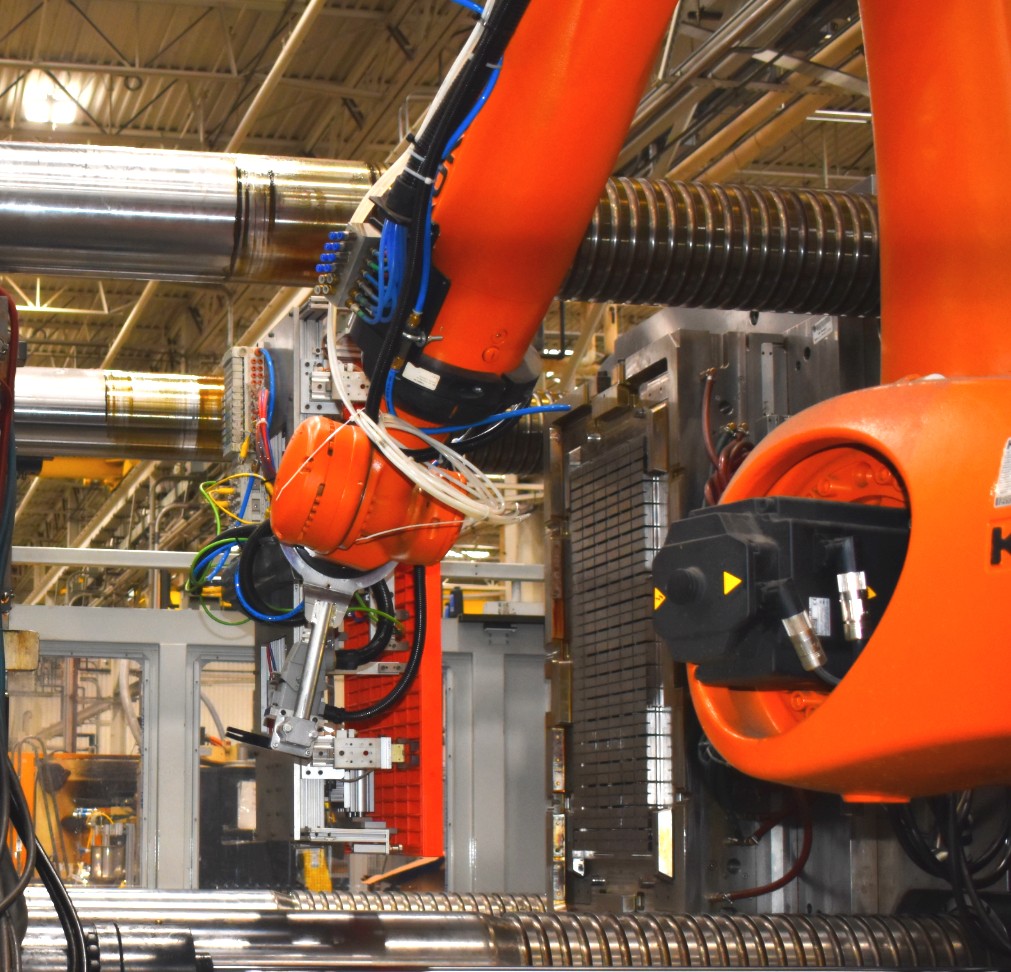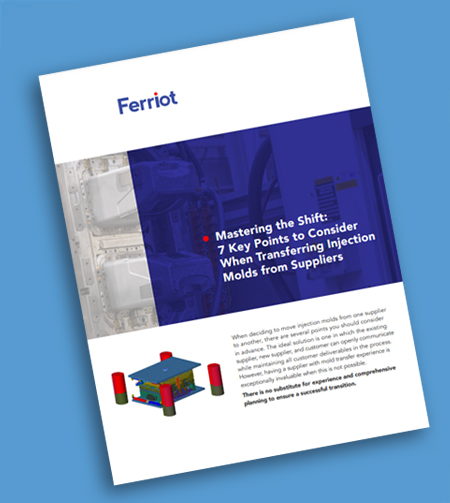As product designs grow more complex and end-use requirements become increasingly demanding, many OEMs are turning to large part injection molding to produce bigger, more durable plastic components at scale. From industrial enclosures and business machine housings to automotive panels and medical equipment enclosures, large molded parts are playing a critical role in today’s manufacturing landscape.
But molding larger parts isn’t just a matter of using more material. These components present a unique set of engineering and manufacturing challenges, including managing part shrinkage and cooling times, and ensuring uniform wall thickness and structural stability. Press capacity, mold design, and even resin selection become significantly more complex when you scale up.
Let’s take a look at the key considerations OEMs need to factor in when planning for large part injection molding.
What Qualifies as a Large Injection Molded Part?
Large part injection molding is more than a subjective term; it’s a functional threshold defined by part dimensions, weight, and the press capacity required to mold it.
While there’s no universal cutoff, large part injection molding typically refers to components that:
- Exceed 15 inches in one or more dimensions
- Weigh several pounds or more per part
- Require presses with clamp forces of 500 to 1,500 tons or more
- Demand greater shot size capacity and sophisticated cooling systems
These parts also often feature thick walls, complex ribbing, or structural reinforcement to meet performance and durability requirements. Examples include industrial housings for printers or retail fuel dispensers, durable enclosures for medical equipment, or structural components used in heavy-duty machinery.
Design Considerations for Large Molded Parts
Designing for large part injection molding adds a layer of complexity that makes early planning and design expertise essential. Elements like draft angles (which help ensure smooth ejections from the mold) and ribbing (essential for structural integrity) become more challenging and more important on larger parts.
Ferriot helps OEMs navigate these challenges from the start through design for manufacturability (DFM) reviews. Our engineers evaluate part geometry to flag potential risks early and make recommendations that reduce the likelihood of production delays or expensive retooling.
For particularly complex components, we also use mold flow simulation tools to model resin behavior within the mold, allowing us to proactively fine-tune designs long before production. This early collaboration helps ensure that large parts are optimized for quality, repeatability, and cost-efficiency.
Tooling for Large Parts: What to Expect
In large part injection molding, the molds themselves present significant engineering and financial stakes, too. These tools are larger, heavier, and more intricate than standard-sized molds, and the room for error is far smaller. Cooling systems, for instance, must be expertly designed to regulate temperature across expansive surfaces and thicker walls, ensuring consistent quality and minimizing cycle time. At the same time, ejection systems have to be robust enough to remove large parts without causing damage or deformation.
Another key consideration is gating strategy. For large parts, the way molten plastic flows into the mold can make or break the final result. Improper gating can lead to weld lines, voids, or uneven packing that compromise part strength or appearance. That’s why Ferriot’s in-house tooling and engineering teams are deeply involved in every phase of the mold development process — from the first 3D model to final tool validation.
Press Capabilities and Equipment Requirements
Not all injection molders are equipped for large part injection molding — both literally and operationally. These projects demand a level of infrastructure that smaller shops may not be able to provide.
Critical press capabilities include:
- High tonnage capacity to maintain proper clamp force during injection
- Large shot size to accommodate the volume of material needed per cycle
- Uniform clamp force distribution to prevent flashing or warpage in oversized molds
Ferriot’s production floor includes presses specifically designed to support large molds, long flow paths, and extended cycle times. Our equipment is matched to the challenges of big, high-performance parts — giving OEMs confidence that their large-scale designs can be molded reliably and repeatedly.
Secondary Services That Add Value
For large parts, the value of end-to-end manufacturing becomes even more apparent. Transporting oversized parts between multiple vendors for post-processing not only increases costs but also raises the risk of damage or delays.
Ferriot offers a range of value-added services to streamline the production of large molded parts, including assembly of multi-component systems, painting and decorating, and functional testing and inspection for quality assurance.
By housing these services under one roof, we help OEMs consolidate their supplier base and keep large, complex projects moving on schedule.
Succeed with Large Part Injection Molding with Ferriot
When it comes to large part injection molding, success starts long before the first shot of resin. Early planning, thoughtful design, and a manufacturing partner with the right expertise and equipment make all the difference.
Ferriot brings all of these capabilities under one roof. Our experienced team, advanced molding equipment, and full-service support model are built to help OEMs streamline production, reduce risk, and deliver high-quality parts at scale.
If you’re preparing to scale up production or bring a large, complex plastic part to market, Ferriot is here to help. Contact us today to learn more about our large part injection molding solutions.



